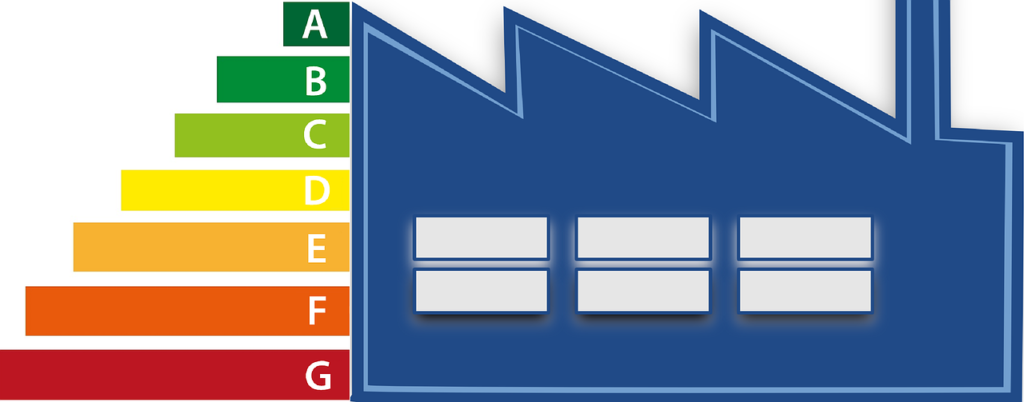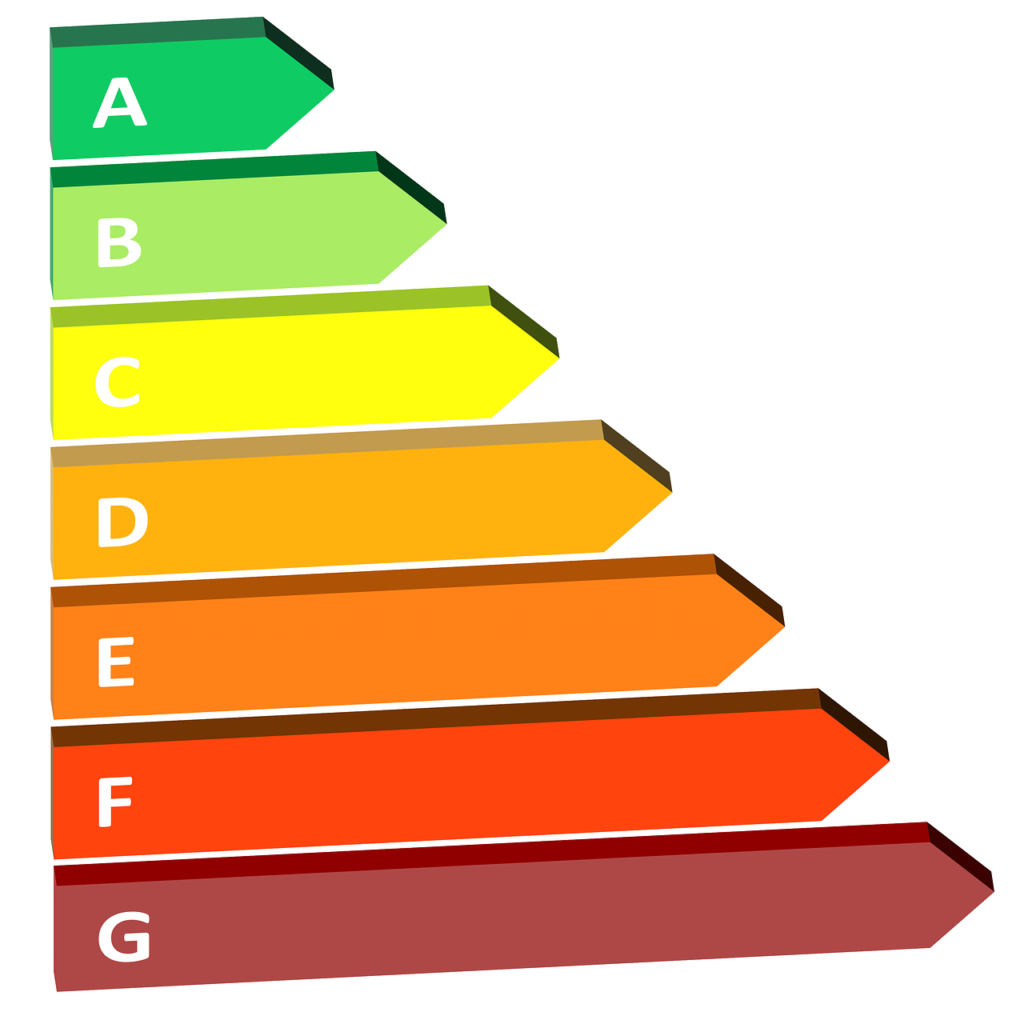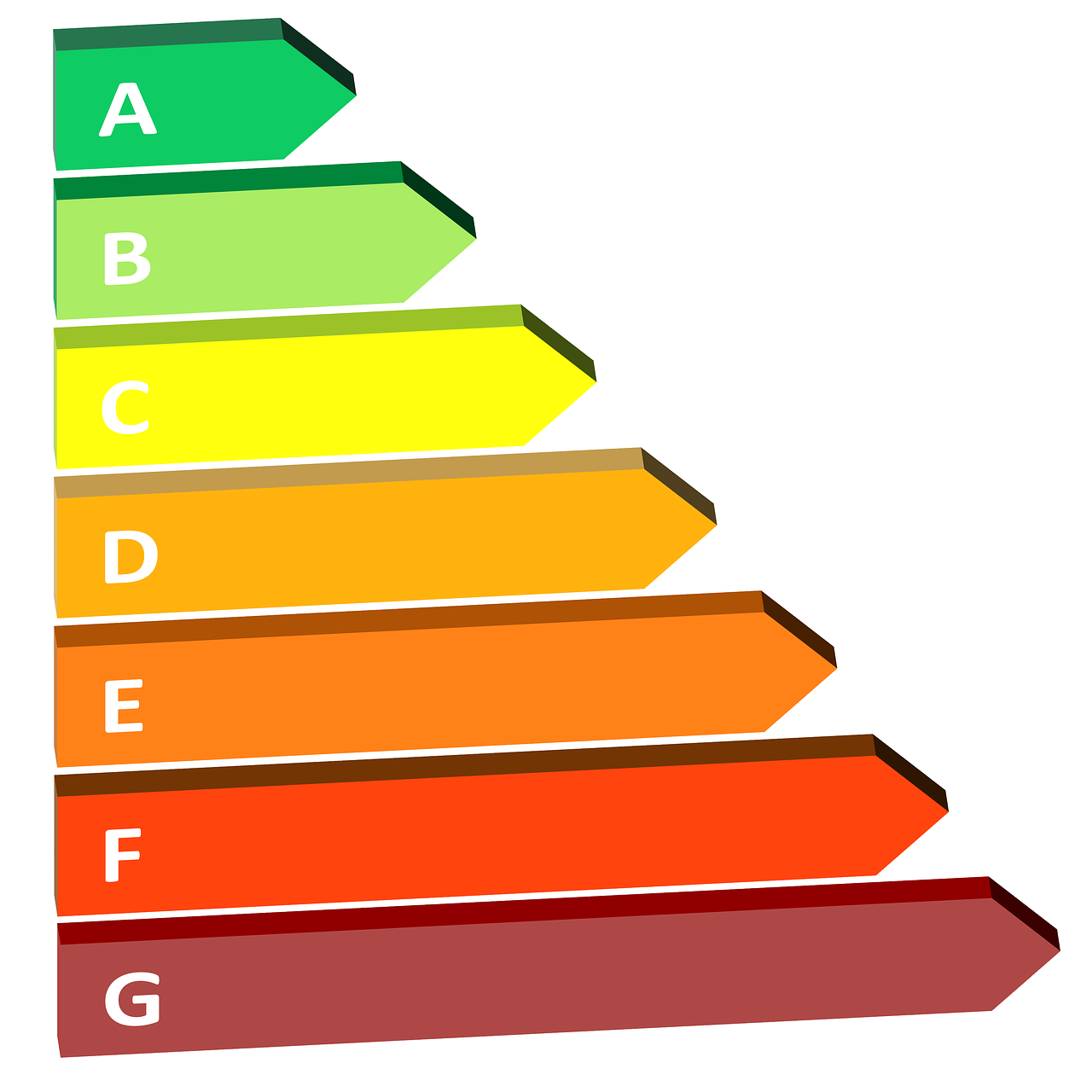Imagine cozying up to a fireplace on a chilly winter evening, the warmth spreading throughout the room as the crackling flames dance before your eyes. Now, picture this comforting scene with the added benefit of energy-efficiency. That’s right, we are here to decode the numerous advantages of energy-efficient fireplace heaters. From reducing energy consumption to providing a sustainable heating solution, these innovative devices not only offer warmth but also bring a host of benefits to your home and the environment. So, let’s dive in and uncover the secrets behind these smart choices for heating your space.
What is an energy-efficient fireplace heater?
Definition and explanation
An energy-efficient fireplace heater is a heating appliance that combines the cozy ambiance of a traditional fireplace with the efficiency and convenience of modern technology. It is designed to provide warmth to indoor spaces while minimizing energy consumption and reducing environmental impact. These heaters utilize advanced technologies, such as thermostats, adjustable flame settings, and programmable timers, to maximize efficiency and control heat output.
How it works
Energy-efficient fireplace heaters operate by burning fuels, such as natural gas, propane, or wood pellets, to produce heat. The heat is then circulated throughout the room using a combination of radiant heat and convection. Radiant heat warms objects and people in its path, while convection moves the heated air around the space. Some models may also incorporate a fan or blower to facilitate the distribution of warm air.
Types of energy-efficient fireplace heaters
There are several types of energy-efficient fireplace heaters available in the market, each with its own unique features and advantages. The most common types include:
-
Gas fireplace heaters: These units are fueled by natural gas or propane and offer instant heat with the flick of a switch. They are highly efficient and can be vented through a wall or a chimney.
-
Electric fireplace heaters: Electric fireplace heaters are popular for their ease of use and versatility. They use electricity to power a heating element and often come with adjustable flame effects to create a realistic fireplace ambiance.
-
Pellet fireplace heaters: Pellet fireplace heaters burn compressed wood pellets, providing a renewable source of heat. They require minimal maintenance and produce very little ash and emissions.
-
Wood-burning fireplace heaters: Traditional wood-burning fireplace heaters provide a rustic and charming atmosphere. They require regular fuel replenishment and proper venting, but can be a sustainable heating option when using responsibly sourced wood.
Advantages of energy-efficient fireplace heaters
Energy savings
Energy-efficient fireplace heaters are specifically designed to minimize energy consumption and maximize heat output. By utilizing advanced technologies and insulation, these heaters ensure that a significant portion of the heat produced is effectively distributed throughout the room, reducing the need for additional heating sources. This can result in lower energy bills and increased savings over time.
Reduced environmental impact
Compared to traditional fireplace heaters, energy-efficient models offer a reduced environmental impact. Gas fireplace heaters emit fewer greenhouse gases compared to wood-burning units, and electric fireplace heaters have no direct emissions. Pellet fireplace heaters use renewable wood pellets as fuel, which are considered a carbon-neutral energy source. By opting for an energy-efficient fireplace heater, you are actively contributing towards a greener and more sustainable future.
Improved indoor air quality
Energy-efficient fireplace heaters are designed to operate with minimal emissions, resulting in improved indoor air quality. Unlike wood-burning fireplace heaters that release smoke and particulate matter, these heaters use clean-burning fuels or electricity, reducing the risk of respiratory irritations and allergies. Additionally, some models are equipped with air filters to further enhance indoor air quality by removing dust, pollutants, and allergens.
Enhanced safety features
Energy-efficient fireplace heaters often come with advanced safety features to ensure the well-being of your household. These features may include overheat protection, which automatically shuts off the heater if it exceeds a certain temperature, and tip-over protection, which cuts off power if the unit is accidentally knocked over. Additionally, electric and gas fireplace heaters eliminate the risk of sparks, open flames, and flying embers associated with traditional wood-burning fireplaces, minimizing the chance of accidental fires.

This image is property of pixabay.com.
Cost considerations and savings
Initial investment
The cost of an energy-efficient fireplace heater will vary depending on the type, brand, and features. Electric fireplace heaters typically have a lower upfront cost compared to gas or pellet models. Gas fireplace heaters may require additional expenses for professional installation and venting systems. Wood-burning fireplace heaters can be more affordable in terms of initial investment, but ongoing fuel costs and maintenance should be taken into account. Consider your budget and long-term savings potential when choosing the right model for your needs.
Operational costs
When it comes to operational costs, electric fireplace heaters are generally the most cost-effective option. They utilize electric heating elements, which are highly efficient and have lower energy consumption compared to other fuel sources. Gas fireplace heaters consume natural gas or propane, which may have fluctuating costs depending on market prices. Pellet fireplace heaters require wood pellets as fuel, which can vary in price but are generally more affordable compared to other fuel sources. Wood-burning fireplace heaters offer the potential for cost savings if you have access to a free or inexpensive wood supply.
Potential long-term savings
Although the initial investment for an energy-efficient fireplace heater may be higher than a traditional fireplace, the long-term savings potential can outweigh the upfront cost. By reducing energy consumption and utilizing highly efficient technologies, these heaters can significantly lower your monthly heating bills. Additionally, some energy-efficient models may qualify for tax credits, rebates, or incentives, further reducing the overall cost and increasing your savings over time.
Efficiency ratings and certifications
Understanding energy efficiency ratings
When choosing an energy-efficient fireplace heater, it is important to consider its energy efficiency rating. The most common rating system used is the Annual Fuel Utilization Efficiency (AFUE) rating for gas or pellet fireplace heaters. AFUE measures the overall efficiency of a heating system by calculating the ratio of usable heat output to the total energy input. The higher the AFUE percentage, the more efficient the fireplace heater is in converting fuel into usable heat. For electric fireplace heaters, the energy efficiency is often measured through the wattage and heat output, with higher wattage indicating greater energy consumption.
Certifications to look for
Look for certifications from recognized organizations, such as ENERGY STAR, to ensure that the energy-efficient fireplace heater meets stringent efficiency and environmental standards. ENERGY STAR-certified fireplace heaters have undergone rigorous testing and are proven to meet or exceed minimum efficiency requirements. These certifications serve as a guarantee of high performance and can help you make an informed decision when purchasing an energy-efficient fireplace heater.
Comparison with traditional fireplace heaters
Compared to traditional fireplace heaters, energy-efficient models offer significant advantages in terms of energy savings and environmental impact. Traditional wood-burning fireplaces are known for their inefficiency, as the majority of the heat generated is lost through chimney drafts. They also emit smoke, particulate matter, and carbon monoxide, which can negatively impact indoor air quality and contribute to air pollution. Energy-efficient fireplace heaters provide a more controlled and efficient heating experience, with reduced emissions and improved energy consumption.

This image is property of pixabay.com.
Factors to consider when purchasing
Heating capacity
When choosing an energy-efficient fireplace heater, consider the heating capacity required for your space. Evaluate the size of the room or area you intend to heat and ensure that the heater can provide adequate warmth. Manufacturers typically specify the heating capacity in terms of square footage, making it easier to determine the suitability of a particular model for your needs. Oversized heaters may result in wasted energy, while undersized heaters may struggle to provide sufficient warmth.
Energy source
Consider the availability and accessibility of the energy source required for the fireplace heater. Gas fireplace heaters require a natural gas or propane supply, which may need to be installed or connected by a professional. Electric fireplace heaters only need a standard power outlet, making them easy to install in any location. Pellet fireplace heaters require a steady supply of wood pellets, which should be readily available in your area. Wood-burning fireplace heaters require a constant source of firewood, so consider if you have access to affordable or sustainable wood supplies.
Design and aesthetics
Energy-efficient fireplace heaters come in various designs and styles, allowing you to choose one that complements your home decor and personal preferences. Consider the visual appeal of the fireplace heater, including the flame effects, log sets, and overall aesthetics. Some models offer customizable flame settings, allowing you to adjust the intensity and color of the flames. Take into account the available space, installation requirements, and any additional features, such as mantels or media storage, that you may desire.
Installation requirements
Before purchasing an energy-efficient fireplace heater, assess the installation requirements and ensure that they align with your home’s infrastructure. Gas fireplace heaters often require professional installation and venting systems to ensure safe operation. Electric fireplace heaters, on the other hand, can be easily plugged into a standard power outlet without the need for additional ventilation. Pellet and wood-burning fireplace heaters may require proper venting or chimney systems to eliminate smoke and maintain indoor air quality. It is important to consider these factors to ensure a seamless and safe installation process.
Installation and maintenance tips
Proper installation procedures
Follow the manufacturer’s instructions and guidelines for proper installation of your energy-efficient fireplace heater. If you are unsure or uncomfortable with the installation process, it is advisable to seek professional assistance to ensure safe and correct installation. Improper installation can lead to hazards such as gas or carbon monoxide leaks, electrical issues, or fire hazards.
Venting options
Different types of energy-efficient fireplace heaters have varying venting requirements. Gas fireplace heaters may require direct venting through an exterior wall, while electric fireplace heaters do not require any venting. Pellet and wood-burning fireplace heaters may require a chimney or vent pipe to allow proper ventilation and eliminate smoke. Consult the manufacturer’s instructions and local building codes to ensure compliance and safety.
Regular cleaning and maintenance routines
Maintaining your energy-efficient fireplace heater is essential to keep it running efficiently and ensure safe operation. Clean the heater regularly to remove dust, debris, and any buildup that may affect performance. Be sure to follow the manufacturer’s recommended cleaning procedures for each specific type of fireplace heater. Additionally, schedule regular maintenance checks to inspect and clean any venting systems, fans, filters, or other components as suggested by the manufacturer. Proper maintenance will extend the lifespan of your fireplace heater and ensure optimal performance.

This image is property of pixabay.com.
Safety precautions and guidelines
Fire safety measures
When operating an energy-efficient fireplace heater, it is important to follow fire safety precautions to prevent accidents or fires. Keep flammable materials, such as curtains and furniture, at a safe distance from the heater. Avoid placing any objects on or near the heater that may obstruct airflow or pose a fire hazard. Install smoke alarms and carbon monoxide detectors in your home, ensuring they are in working condition. Regularly check and replace batteries as needed. Lastly, never leave the fireplace heater unattended and always turn it off before leaving the room or going to bed.
Carbon monoxide detection
While energy-efficient fireplace heaters produce minimal carbon monoxide emissions, it is still important to have proper detection in place. Install carbon monoxide detectors in your home, especially near bedrooms or areas adjacent to the fireplace heater. Follow the manufacturer’s instructions for installation and maintenance to ensure reliable and accurate detection. If a carbon monoxide alarm sounds, evacuate the area immediately and seek professional assistance to address the issue.
Childproofing and pet safety
If you have children or pets in your home, take necessary precautions to childproof and ensure their safety around the energy-efficient fireplace heater. Install safety gates or barriers to prevent access to the heater area. Keep any cords or electrical components out of reach of children or pets, ensuring they are securely tucked away. Educate children about the potential dangers of the heater and establish rules regarding safe usage. Regularly inspect the heater for any loose or damaged parts that may pose a risk.
Additional features and functionalities
Remote control and smart home integration
Many energy-efficient fireplace heaters come equipped with remote controls, allowing you to conveniently adjust settings and heat output from anywhere in the room. Some models even offer smart home integration, allowing you to control the fireplace heater through smartphone apps or voice commands. These features add convenience and flexibility to your heating experience, ensuring that you can easily modify settings to suit your comfort level.
Thermostat and temperature control
Energy-efficient fireplace heaters often feature thermostats and temperature control options, allowing you to maintain a consistent and comfortable indoor temperature. You can set the desired temperature and let the heater adjust its output accordingly. This feature helps reduce energy consumption by preventing overheating and unnecessary operation, ensuring optimal efficiency and comfort.
Adjustable flame settings
To enhance the ambiance and aesthetic appeal of your energy-efficient fireplace heater, look for models with adjustable flame settings. These settings allow you to customize the flame intensity, height, and color to create a desired ambiance. Whether you prefer a cozy flickering flame or a vibrant roaring fire, adjustable flame settings provide versatility and personalization to suit your mood or occasion.
Programmable timers
Programmable timers are a useful feature in energy-efficient fireplace heaters, as they allow you to schedule the heating operation according to your daily routine. You can set the heater to turn on and off at specific times, ensuring that you come home to a warm and cozy environment without wasting unnecessary energy. This feature is especially beneficial for those with fluctuating schedules or who want to preheat a room before use.
Energy-efficient fireplace heaters for different spaces
Living rooms
There are various energy-efficient fireplace heaters suitable for living rooms. Consider models that offer sufficient heating capacity for the size of your living room. Electric fireplace heaters with adjustable flame effects and realistic logs can provide a cozy and inviting focal point. Gas fireplace heaters with customizable aesthetics, such as ceramic logs or decorative glass, can enhance the overall ambiance and comfort of your living space.
Bedrooms
When choosing an energy-efficient fireplace heater for your bedroom, safety and quiet operation are key considerations. Opt for models that have built-in safety features, such as tip-over protection and temperature sensors. Electric fireplace heaters are often preferred for bedrooms due to their silent operation and easy installation. Consider models with adjustable thermostat settings to maintain a comfortable sleeping environment throughout the night.
Basements
Basements can be difficult to heat effectively, but energy-efficient fireplace heaters can provide a cost-efficient solution. Consider gas fireplace heaters with proper venting systems to ensure safe operation in enclosed spaces. Electric fireplace heaters can also be a viable option, especially if you have access to a power outlet in the basement. Pellet fireplace heaters offer a renewable energy source and can be installed in basements with proper ventilation.
Outdoor spaces
Energy-efficient fireplace heaters can also be utilized to extend your outdoor living season. Look for models specifically designed for outdoor use, such as gas or wood-burning fire pits or chimineas. These heaters can provide warmth and ambiance to your patio or backyard, allowing you to enjoy the outdoors even during cooler seasons. Ensure proper venting and comply with local regulations and safety guidelines when using outdoor fireplace heaters.
Top brands and models in the market
Brand A – Model 1
Brand A offers a wide range of energy-efficient fireplace heaters, including gas, electric, and wood-burning options. Model 1 from Brand A is a highly rated electric fireplace heater that combines elegance with functionality. It features realistic flame effects, adjustable temperature settings, and a programmable timer. With its sleek design and energy-efficient operation, Model 1 is a popular choice for adding warmth and ambiance to any space.
Brand B – Model 2
For those seeking a gas fireplace heater, Brand B’s Model 2 is a top contender. It boasts a high AFUE rating, ensuring efficient heat production. Model 2 comes with customizable aesthetics, including realistic logs and a variety of ceramic burner options to create a visually stunning flame display. With its advanced safety features and user-friendly controls, Model 2 offers both warmth and peace of mind.
Brand C – Model 3
Brand C specializes in pellet fireplace heaters and their Model 3 is a standout product. It utilizes renewable wood pellets as fuel, making it a sustainable heating option. Model 3 offers precise temperature control, programmable settings, and low maintenance requirements. With its impressive heating capacity and environmentally friendly operation, Model 3 is a reliable and efficient choice for those seeking a pellet fireplace heater.
Brand D – Model 4
Wood-burning fireplace enthusiasts will appreciate Brand D’s Model 4. Known for its craftsmanship and durability, Model 4 combines traditional aesthetics with energy efficiency. It features a high-quality combustion system and proper venting options to ensure optimal heat output and minimal emissions. Model 4 provides the nostalgic charm of a wood-burning fireplace while meeting modern efficiency standards.
In conclusion, energy-efficient fireplace heaters offer a multitude of advantages, including energy savings, reduced environmental impact, improved indoor air quality, and enhanced safety features. When purchasing an energy-efficient fireplace heater, consider factors such as heating capacity, energy source compatibility, design and aesthetics, and installation requirements. Proper installation and maintenance are crucial for safe and efficient operation. Additionally, look for energy efficiency ratings and certifications to ensure optimal performance. Take advantage of additional features and functionalities such as remote control, thermostat settings, adjustable flame effects, and programmable timers. Energy-efficient fireplace heaters can be suitable for various spaces, including living rooms, bedrooms, basements, and outdoor areas. Finally, consider top brands and models in the market, such as Brand A – Model 1, Brand B – Model 2, Brand C – Model 3, and Brand D – Model 4, to guide your purchasing decision. With the right energy-efficient fireplace heater, you can enjoy the warmth, ambiance, and savings they provide while minimizing your environmental footprint.




